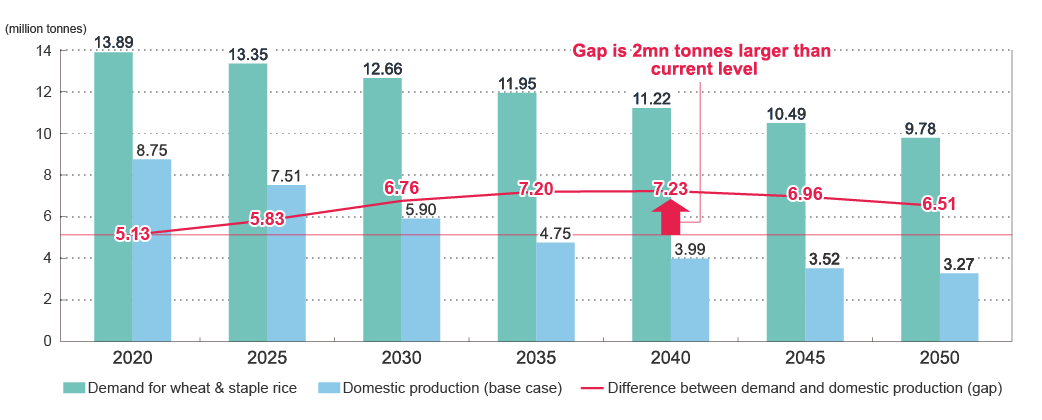Under the second Abe administration, agriculture was positioned as a growth industry and significant progress was made to scale up agricultural operations, particularly for livestock and dairy farming. Greater amounts of land have since been accumulated for rice and wheat, a mark that those products too have scaled up, and this has resulted in the emergence of large operations, some of over 100 ha.
Looking more closely at the situation on the ground around the country, we see that there is little scope for further farmland accumulation. On top of this, production costs are rising and rice prices are falling, making it harder for rice-paddy farmers working 10–30 ha in particular, to continue operating.
Today, as an extension of the Farmers and Farmland Plan that defines ideal scenarios for regional agriculture, legislation requires the development of local plans premised on accumulation of farmland, with communities tasked with developing agricultural visions for their own localities. Japan’s farmland is a patchwork of small plots, greatly encumbering accumulation toward large-scale agricultural operations. An agricultural business entity would need to accumulate at least 100 ha to be able to generate annual sales of ¥100 million, a threshold commonly used to differentiate self-employed farmers and agribusinesses based on corporate management systems. Most farmland in Japan, though, does not avail itself of accumulation that would enable the efficiencies required for farming it to make business sense.
There is, however, enough agricultural land that could be consolidated to allow family-run farms to generate sales of ¥20–30 million on 20–30 ha. Thus we think encouraging and helping develop medium-sized, independent farms should be an important part of future policies for maintaining agriculture and arable lands*.



